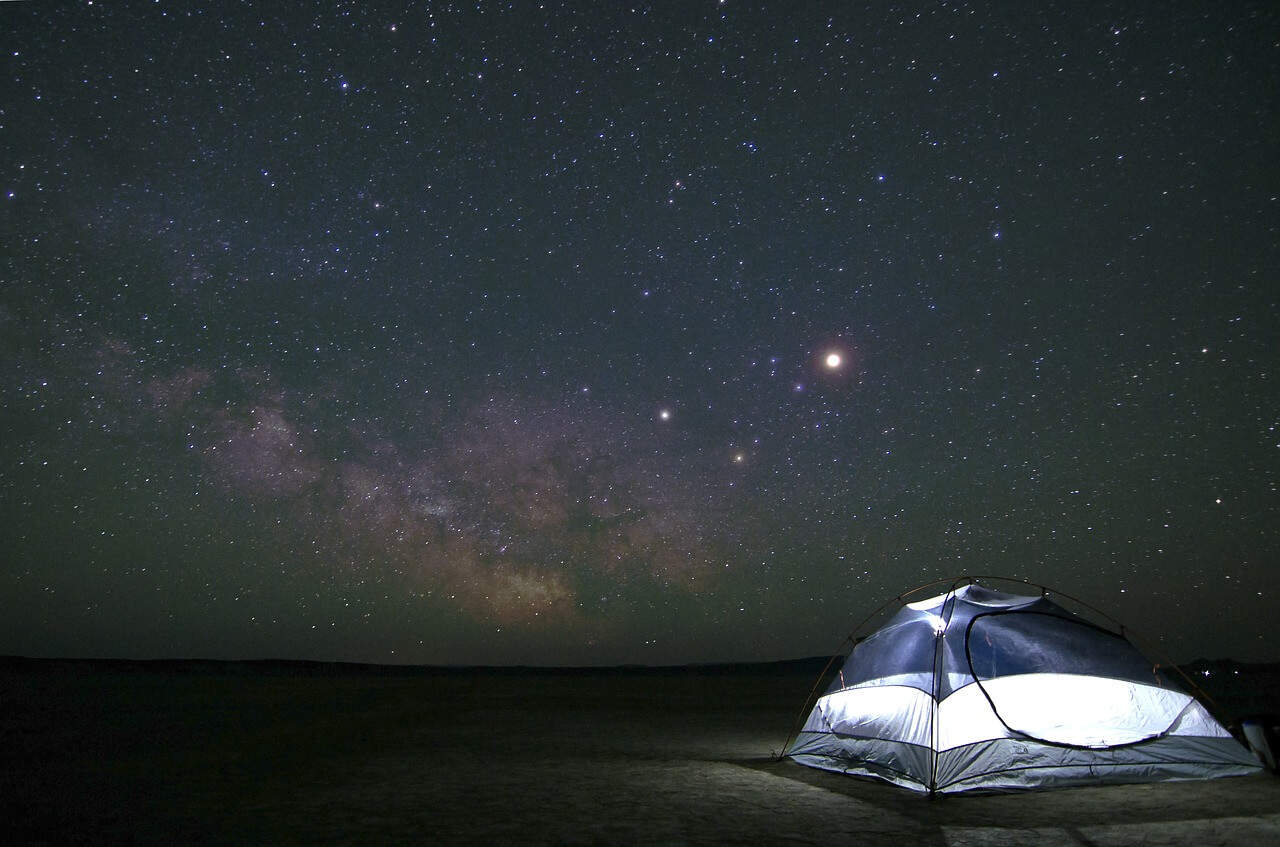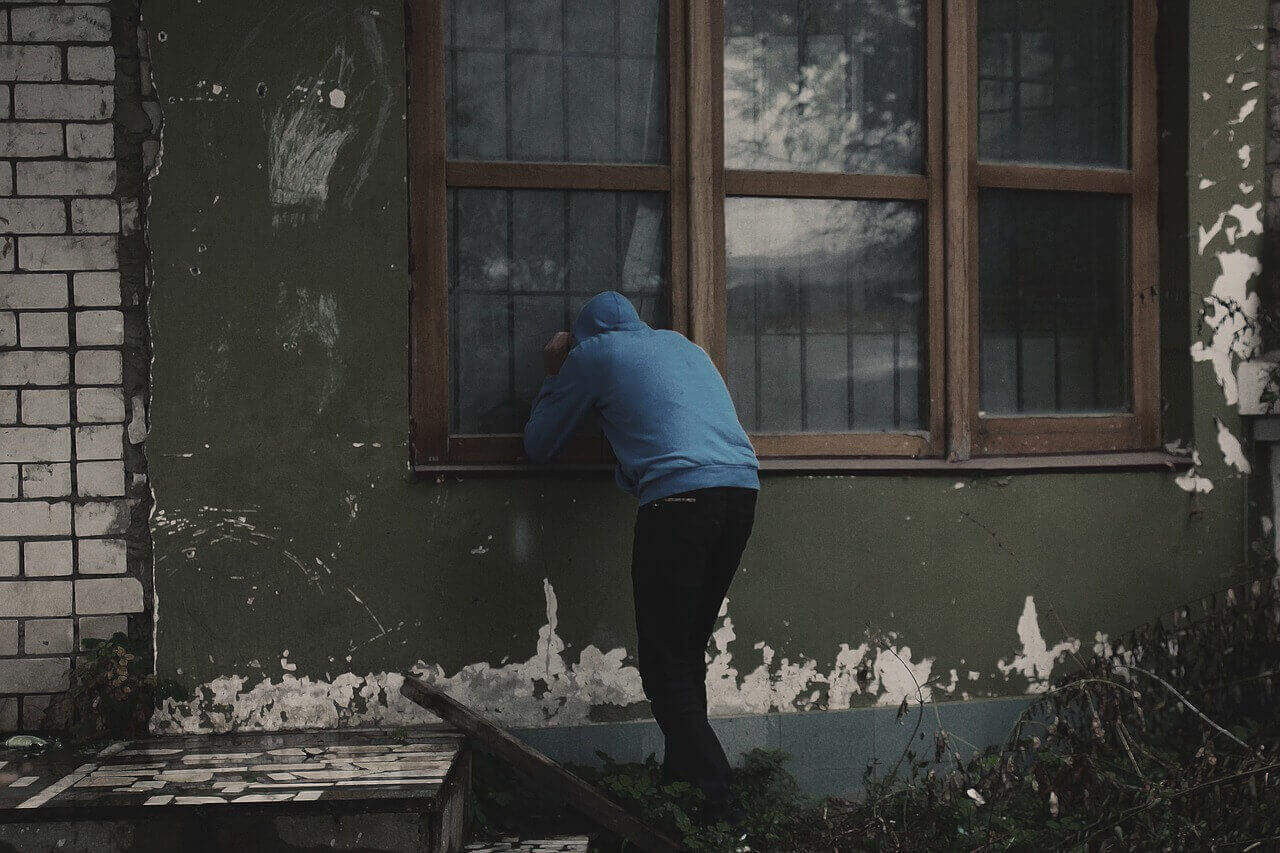Have you ever wondered, what humans did when the sun went down and there was no concept of artificial lighting?
They looked UP. (Don’t roll your eyes, I am serious.)
Yes, they looked up at the night sky and got a glimpse of another world. At times they stared at the night sky in utter awe.
Those glimpses and stares taught them to navigate, helped them build calendars, inspired them to create art, and above all taught them to enjoy stargazing.
Fast forward to the present and the overwhelming majority of the human population is unable to enjoy the age-old fascination of stargazing to the fullest, thanks to the boom in artificial lighting.
No wonder many people are turning to Google to know:
What are the best places for stargazing in the world? As an avid lover of the night sky, I researched this question and found out that the following 25 places are the most amazing for stargazing. All of these places are recognized by the International Dark-Sky Association as Dark-Sky reserves or parks.
Each one of these places deserves a spot at your bucket list, as they are the best places for stargazing in the world.
Also Read: Can you see the planets using binoculars?
25 Best Places for Stargazing
1. NamibRand Nature Reserve, Namibia
This reserve is the only, naturally darkest yet accessible, place on Earth. The central observatory in this reserve has a 12-inch telescope.
A resident astronomer is present to help the tourists navigate the night sky.
Location
100 km away from the town of Maltahohe. 6-hour drive from the capital city of Windhoek.
The ideal time to Visit
May-November
June to October are the busiest tourist months.
People travelling with families may also consider travelling in May or November to avoid overcrowding or to save some bucks.
Pro-Tip
If you have basic knowledge of astronomy then you may borrow small portable telescopes from Wolwedans Campsites and navigate the sky on your own.
In the Namibian night sky, you can expect to observe:
- Center of Milkyway Galaxy
- Planets
- Magellanic clouds
- Zodiacal lights
- Gegenschein
2. Westhavelland Nature Park, Germany
Westhavelland Nature Park is one of the most easily accessible Dark-sky reserve in the world.
It is located near Berlin that is the capital of Germany.
Berlin is the most populous city in Germany and this reserve is the only reserve in the world that is near such a populous city.
Location
70 Km west of Berlin
Ideal Time to Visit
May-July
Pro-Tip
Keep cash handy, as most small business owners in the area don’t have card machines and you won’t appreciate wasting time and money while you draw money from ATMs.
On a clear night you may expect to observe:
- Nebulae
- The Milkyway
- Airglow
- Aurora Borealis
- Zodiacal Light
- Gegenschein
3. Pic Du Midi International Dark Sky Reserve, France
The observatory in this dark-sky reserve has the largest telescope in France.
You can also observe the Sun in this observatory with the help of a sun telescope without damaging your eyesight.
Location
Pic Du Midi is a mountain in French Pyrenees. The nearest airport, Tabes-Lourdes-Pyrenees, is about 50km from Pic Du Midi cable car station. A 15-minute ride on the cable car takes you to the observatory.
Ideal Time To visit
July-August
Pro-Tip
Don’t forget to take some warm clothes with you because even the summer nights can be quite cold at the reserve.
On a clear night you may witness:
- The Milky Way Galaxy
- The Andromeda Galaxy
- Zodiacal lights
- Constellations
- Planets along with their moons
4. Aoraki Mackenzie International Dark Sky Reserve, New Zealand
This is one of the finest dark-sky reserves in the world.
The night sky in this region is so clear that millions of stars seem to appear right before your eyes.
New Zealand’s premier astronomical research centre, Mount John Observatory, is also located in this reserve.
Location
It is located in the heart of the South Island of New Zealand and its just 2.5 hours drive away from Christchurch.
Ideal Time To visit
December-April
Pro-Tip
The best views are observed when there is no moon and you may see the Milky Way galaxy from one end of the horizon to the other.
Various stargazing tours are available in this reserve. The details of those can be seen on the web address given below.
The best stargazing conditions can give you good views of:
- The Southern Cross
- The Milky Way Galaxy
- The Aurora Australis
- The Southern Star
- Planets & Constellations
- The Magellanic clouds
5. Brecon Beacons National Park, UK
Brecan Beacon National park is the first international dark-sky reserve in Wales.
It is located in a mountain range in South Wales, UK.
It is ringed with market towns like Crickhowell, Abergavenny, Llandovery, Brecan, and Talgarth.
All these towns are well connected with the main cities of the country via train and roads.
Location
66 Km from Cardiff
Ideal Time To visit
June – September
Pro-Tip
- The Brecon Beacons get its fair share of rainfall. Do check weather forecast before visiting.
- Free parking is limited and you might have to pay at most of the locations.
With the help of a telescope you may observe:
- The Milky Way Galaxy
- Bright nebulas
- Meteor showers
- Constellations and planets
- Aurora Borealis
- Galilean satellites
6. Mont-Megantic International Dark Sky Reserve, Quebec, Canada
This is the world’s first international dark-sky reserve.
Mont-Megantic research observatory is also located in this park. This observatory has the most performing telescope of the country. This observatory is open for public only for one week in July.
Astrolab arranges astronomy nights and other activities for the public on other days using a 24-inch public telescope in the Popular Observatory.
Location
The nearest city is Sherbrook, at an hours drive from the park.
Ideal Time To visit
July
Pro-Tip
Wear warm clothes as its very cold at the summit, where the observatory is located.
The night sky here is so dark that even with naked eyes you can see:
- The Milky Way Galaxy
- The Andromeda Galaxy
- Northern lights
- Constellations
- Shooting stars and planets
With the help of a telescope you can see:
- Nebulae
- Moon craters
- Galaxies
- Star clusters
7. Exmoor National Park, UK
This is Europe’s first dark-sky reserve.
The night sky has a wider and uninterrupted view in this park due to lack of trees across the moor.
In cities, you can view around 200 stars on average at any given night but you can view around 3000 stars with your naked eyes in this reserve.
You may hire telescopes and guides for an out of the world experience of stargazing in Exmoor national park.
Location
Dulverton is at a 22 minutes drive from this park.
Ideal Time To visit
November to February
Pro-Tip
The best stargazing experience is available in winter, therefore, you must be appropriately dressed with layers of warm clothes. A warm drink in a flask bottle will also come in handy during cold nights.
Apart from the usual night sky, you may also witness:
- The Milky Way Galaxy
- The Saturn rings
- Jupiter storms
- Constellations and other stars
8. Kerry International Dark Sky Reserve, Ireland
This reserve is located between the Kerry mountains and the Atlantic ocean.
You can easily access it by car.
Here, on moonless nights, many more stars appear than they are mentioned on sky maps.
Even the experienced astronomers are surprised by this show of stars and at times they take quite some time to pinpoint popular constellations and stars.
Location
The nearest city is Killarney that is 50km away
Ideal Time To visit
June to September
Pro-Tip
- Don’t forget to bring a bug spray with you because you might encounter mosquitoes or other bugs at night.
- Know the time of nightfall beforehand as the sun sets quite late in Ireland and you might have to wait a lot for the nightfall.
The clear night skies of this reserve provide a visual treat even for your naked eyes by allowing you to witness
- The Milky Way Galaxy
- The Andromeda Galaxy
- Star Clusters
- Constellations and planets
9. Maryland Dark Sky Observatory, North Carolina, USA
The observatory in this dark-sky reserve has a 34-inch large telescope dedicated for research and recreational activities.
Another smaller planetary telescope is also available at the observatory.
You may also bring your telescope and mount it on the concrete pads available at different spots around the observatory.
This observatory is free for amateur astronomers.
Location
Located in Yancey County 6 miles west of Spruce Pine
Ideal Time To visit
June – October
Pro-Tip
Parking at the observatory is not allowed, you should only approach the observatory via shuttle service available at the park.
On a clear night you may witness:
- Stunning views of the Milky Way Galaxy
- Meteors
- Constellations
- Planets and moon
- The Whirlpool Galaxy
- Nebulae
10. Northumberland Dark Sky Park, UK
The Kielder Observatory in this park is the largest sky viewing station in the UK. The main purpose of this observatory is to outreach via public events.
It is only open when an event is running.
Location
This park is located in the Kielder forest 73 miles away from Edinburg
Ideal Time To visit
September – March
Pro-Tip
Don’t forget to book your event in advance as online booking is a prerequisite to visit the observatory in the evening.
Under clear skies you may observe:
- The Milky Way Galaxy
- The Andromeda Galaxy is visible even with the naked eye in winter.
- Comets and Meteors
- Constellations
- Planets
11. Chaco Culture National Historic Park, New Mexico, USA
This park is located in a canyon in the desert and it is home to 11000 years old Pueblo ruins.
At Chaco, during occasions like meteor showers and eclipses, special events are organized.
Location
Located in San Juan county outside Albuquerque
Ideal Time To visit
April – October
Pro-Tip
Beware of the extreme temperatures of the desert and dress accordingly.
You will enjoy watching:
- The eclipses
- Shooting stars
- The Milky Way
- Planets
- Constellations
- Deep-sky objects
- Star clusters and Nebulae
12. Galloway Forest Park, Scotland
This park hosts the Scottish Dark-Sky Observatory. Two main telescopes are available for visitors to observe the night sky.
The observatory also features a planetarium, a presentation room, and an open deck to view the sky with naked eyes.
Location
Located 54.5 miles away from Glasgow
Ideal Time To visit
September-April
Pro-Tip
Make sure to book your session beforehand or visit the observatory on an open evening. Otherwise, you won’t be able to access the observatory
The night sky is so clear that you don’t need any equipment to witness:
- Northern lights
- General view of star formation
- Meteors
Obviously, you will have to take the help of a telescope to view the details of nebulae and the details of other deep sky objects.
13. Headlands International Dark Sky Park, Michigan, USA
This park is open 24 hours a day every day and different stargazing events are organized throughout the year.
Generally, no reservation is required but camping is not allowed in the park. The observatory is reserved for researchers and staff but in case of special events views are projected on a TV screen for viewers.
Location
2 miles west of downtown Mackinaw
Ideal Time To visit
April-November
Pro-Tip
Arrive early for finding good parking spots.
On a clear night you may witness:
- The Milky Way Galaxy
- Zodiacal lights
- Northern lights
- Constellations, stars, and planets
14. Cherry Springs State Park Pennsylvania, USA
The night sky of Cherry Spring State Park is so clear that the Milky Way casts a shadow. Different events and educational activities are organized for the public.
The visitors are advised to bring their binoculars with them preferably 10X50 power, for stargazing.
Location
West Branch Potter County 16km SW of Galeton
Ideal Time To visit
June-September
Pro-Tip
If you are going to visit the star party you will have to book your place 4-5 months in advance.
Up to 30,000 stars might fill up the sky on clear nights.
The lucky visitors can view:
- Galaxies
- Asteroids
- Lunar viewing
- Zodiacal lights
- Meteor showers
- The space station
- Planets and other celestial bodies
- Constellations and stars
15. National Bridges, National Monument, Utah, USA
Here, three natural bridges create a window for 15000 stars to peak from the sky. A 16.5-inch telescope is available during astronomy programs to view the night sky.
The guided events in the summer are the most popular attraction for tourists.
Location
46 miles west of Blanding
Ideal Time To visit
June – September
Pro-Tip
Get all the info at the visitor centre as there is no mobile service in the area.
During clear nights you can see the milky way of forming a bridge over the natural bridges.
With the help of a telescope you can observe:
- Galaxies
- Nebulae
- Star clusters and planets
- Constellations
16. Goldendale Observatory State Park, Washington
This park is located in the hills above the Columbia River. The observatory has two large telescopes and several portable telescopes.
It houses the largest public telescope in the US.
Location
Goldendale, Klickitat
Ideal Time To visit
June – September
Pro-Tip
- Pets are not allowed except documented and vested service dogs.
- The night sky is a treat to watch even with naked eyes.
- You can view the celestial bodies in detail using the powerful telescopes of the observatory.
17. Geauga Observatory Park, Ohio, USA
This observatory has two large telescopes, namely:
- The Oberly Observatory, having a 25 inch Oberle Telescope
- Nassau Astronomical station, having a 36inch Warner & Swasey Telescope
Most of the events for the public are organized at the Oberle observatory.
The Nassau Astronomical station is open for public only for certain events.
Location
Montville Township 30 miles East of Cleveland
Ideal Time To visit
April-May & September-October
Pro-Tip
Wheelchair/stroller access is not available for the large telescope. The people with wheelchairs/strollers may use smaller telescopes placed on the ground.
With the help of the powerful telescopes of the observatory you may observe:
- Galaxies
- The Nebulae
- Moon craters and other celestial features
- Constellations and planets
18. Zsellic Park of Stars, Hungary
This park has a public observatory having a 25m tall observation tower and a planetarium for various events.
This park is one of the best places to observe the zodiacal lights in Europe. The zodiacal lights are best visible in spring or autumn.
Location
South West Hungary 21 minutes drive from Kapsovar
Ideal Time To visit
Anytime except for February, March, and September
Pro-Tip
Keep a sky map handy during stargazing
On a clear sky, you will be able to observe:
- Galaxies
- Zodiacal lights
- Northern lights
- Constellations
- Planets and moons of planets
19. Big Bend National Park, Texas, USA
This park is the south most park in the Northern Hemisphere. Due to its location, you may also observe some of the celestial objects of the southern hemisphere.
On clear nights up to 2000 stars are visible to the naked eye.
Location
South Western Texas along the border of Mexico. It is at a drive of 40 minutes from Marathon
Ideal Time To visit
March-April or October-November
Pro-Tip
Bring appropriate clothing as there is 40-50 degree temperature swing between day and night.
Some prominent observations in the dark sky of Texas are:
- The Milky Way Galaxy
- The Southern Star
- The core of the Andromeda Galaxy
- Stars and Planets
- Constellations
- Three Stars of the Southern Cross
20. Central Idaho Dark-Sky Reserve, USA
Central Idaho is one of darkest night skies in the US. Different programs and special events are organized at this reserve.
Whether you use your naked eyes, binoculars or the telescope the night sky of this reserve will give a humbling view.
Location
Central Idaho, 30km from the Sun Valley
The ideal time to Visit
June-September
Pro-Tip
If you want to catch the best of Idaho night sky plan your trip according to the lunar calendar. Pick the time of the new moon for the best experience.
The clear skies of this reserve present before you:
- The Milky Way Galaxy
- The Andromeda Galaxy
- Satellites including the space station
- Messier objects
- Nebulae
- Constellations and planets
- Lunar viewing
- Meteor showers
21. Grand Canyon National Park, Arizona, USA
The Grand Canyon National Park is one of the most famous tourist resorts in the world. It has one of the best night skies in the world.
The park holds one-week long star festival in June.
During this festival astronomical telescopes are placed at both North and South rims of the cannon and visitors can experience the night sky like astronomers.
Location
At a five minutes drive from the town of Tusayan
Ideal Time To visit
June
Pro-Tip
To minimize light pollution at night, remember to use only the red flashlight whenever required.
The visitors have two options:
- They can either visit the South rim area of the canon.
- Or they can visit the North rim area of the canon.
The north rim is closed in winter.
A clear night at the cannon gives excellent views of:
- The Milky Way Galaxy
- Planets and stars
- Constellations
- Meteor showers
22. Clayton Lake State Park, New Mexico, USA
The Star Point observatory in this park has a 12-inch computerized telescope connected to a remote TV monitor.
The roof of the observatory is retractable and stargazing is done through that roof.
The astronomy club has several 8-inch telescopes for visitors and regular star parties are arranged in the park each month.
Location
15 miles North of Clayton
Ideal Time To visit
May – October
A clear dark sky in this park guarantees stunning views of galaxies, stars, constellations, and planets.
23. Death Valley National Park, California, USA
This park has an amazingly dark sky and it is the largest in the US. The park rangers organize various events in collaboration with astronomy organizations.
You may also stay overnight at Mahogany Flat Campground located at 2499 meters above sea level.
Location
2 hours North West of Los Vegas via road.
Ideal Time To visit
November-April
Pro-Tip
For observing the maximum number of stars, find an elevated place because, from the bottom of the valley, many starts are blocked due to surrounding mountains.
On a clear night from a high enough surface you may observe:
- The milky way
- Stars and planets
- Nebulae
- The moon
- Constellations
24. Warrumbungle National Park NSW, Australia
This is Australia’s first dark-sky park.
It has two main observatories.
- The Siding Spring Observatory
- The Warrumbungle observatory
The Siding Spring Observatory is a working research observatory. The research telescopes of this observatory are only open for the public for one week in October. At this time visitors can experience the night sky as astronomers do.
The Warrumbungle observatory runs nightly viewing sessions for the public.
Location
35 km West of Coonabarabran
Ideal Time To visit
October
Pro-Tip
If you have a DSLR or Nikon camera don’t forget to take it with you. The staff lets the visitors hook up their cameras with the telescope at the Warrumbungle observatory, and you can photograph your pictures of the celestial objects.
On a clear night you may witness:
- The Southern Cross
- The Milky Way Galaxy
- The Aurora Australis
- The Southern Star
- Planets & Constellations
- The Magellanic clouds
25. Hortobagy National Park, Hungary
This park offers night time walks and interpretive programs. It is planning to open its observatory soon.
Here, you can observe the Milky Way and zodiacal lights with your naked eyes.
Location
Eastern Hungary at 2 hours drive from Budapest
Ideal Time To visit
March- November
Pro-Tip
Keep a sky map handy for locating major objects in the sky.
With the help of binoculars or a telescope, you will be able to observe:
- Galaxies
- Zodiacal lights
- Northern lights
- Constellations
- Planets and moons of planets
References:
http://picdumidi.com/en/discover-the-pic-du-midi/rice-en
http://www.breconbeacons.org/about-brecon-beacons-dark-sky-reserve
http://www.namibrand.com/dark-sky.html

Binos enthusiast since I was 12 – A real expert in all things optics including rifle scopes and red dots. Live in Dubai & love writing, beaches and eating!





